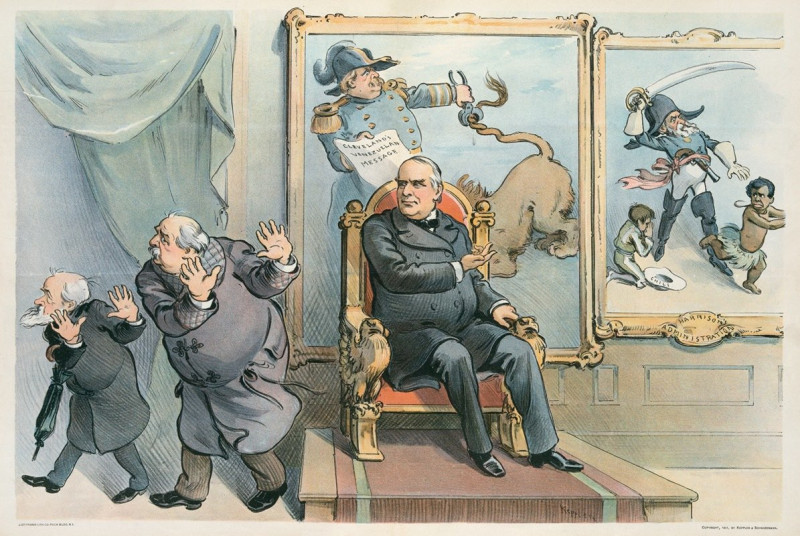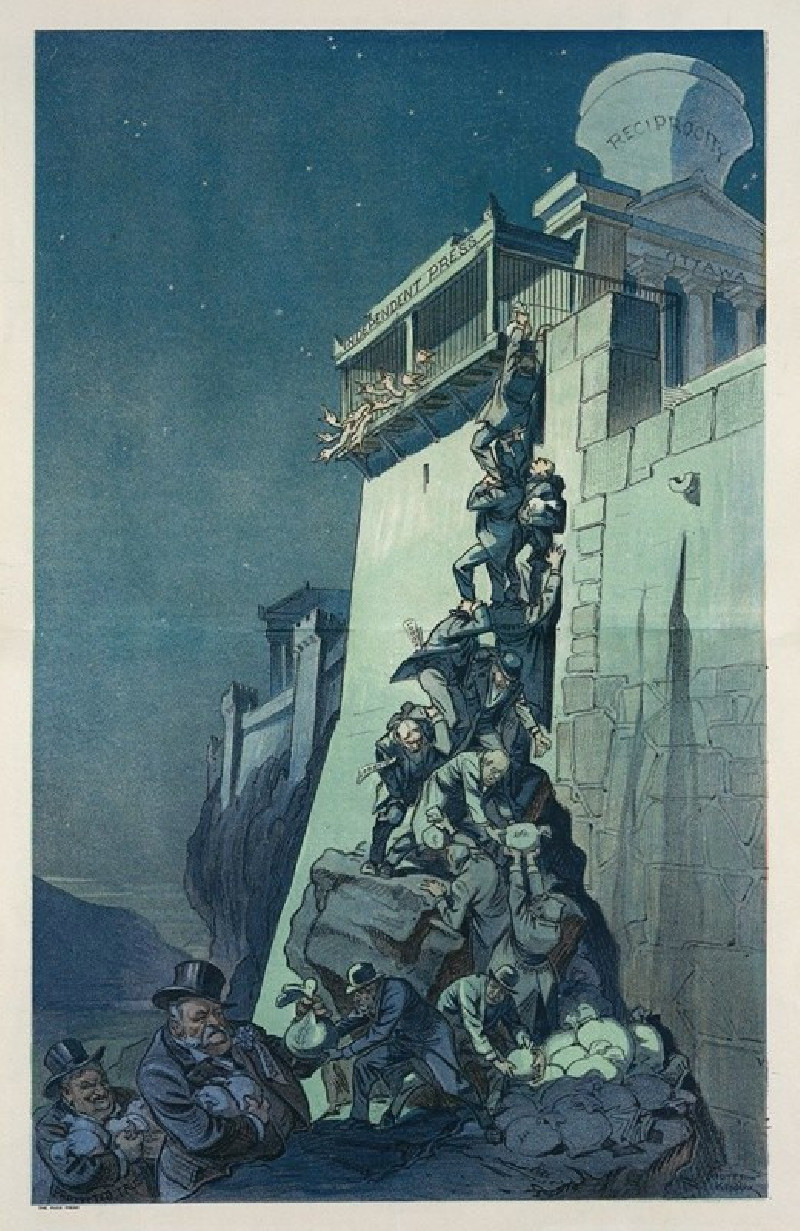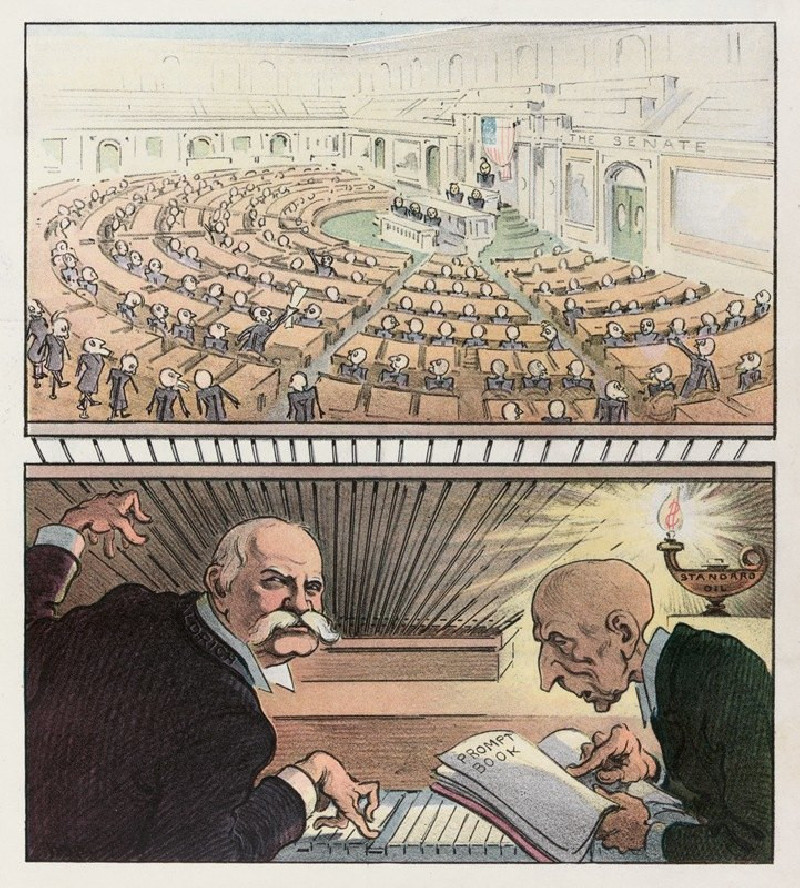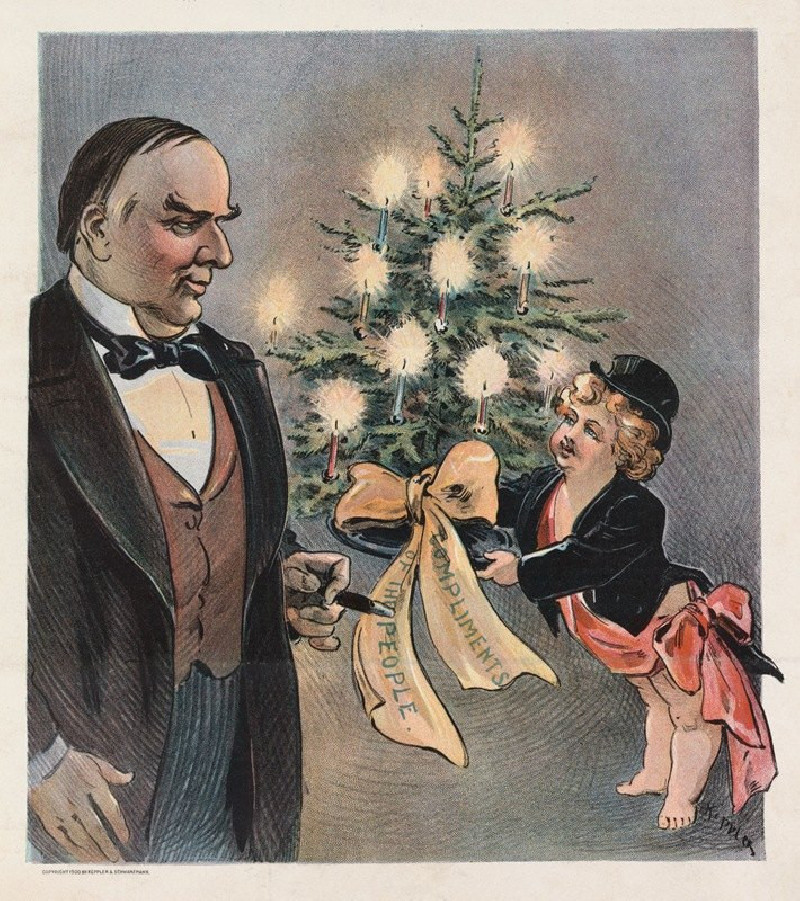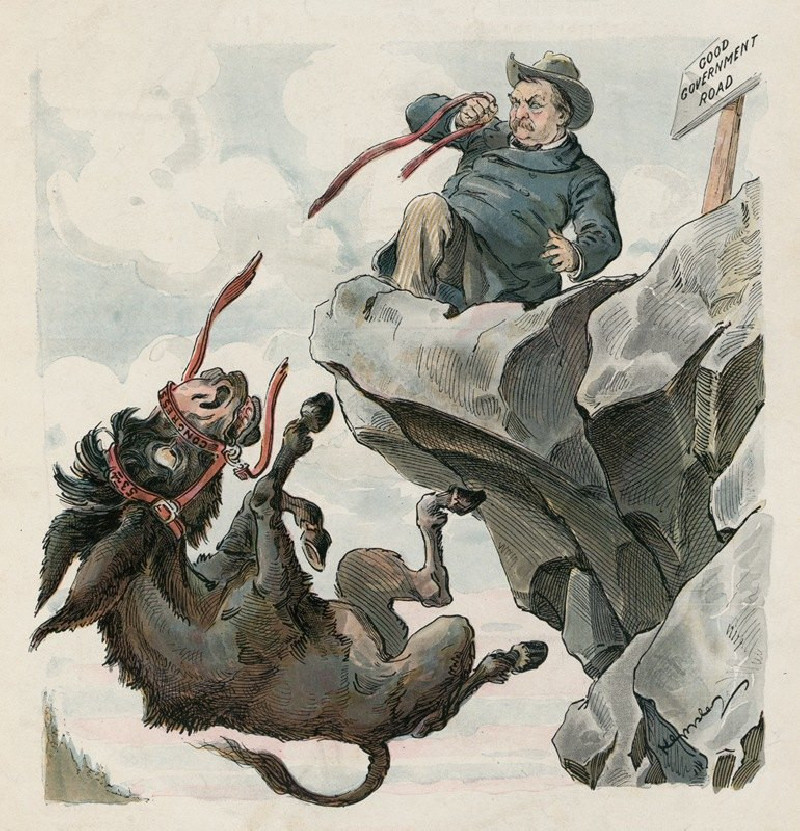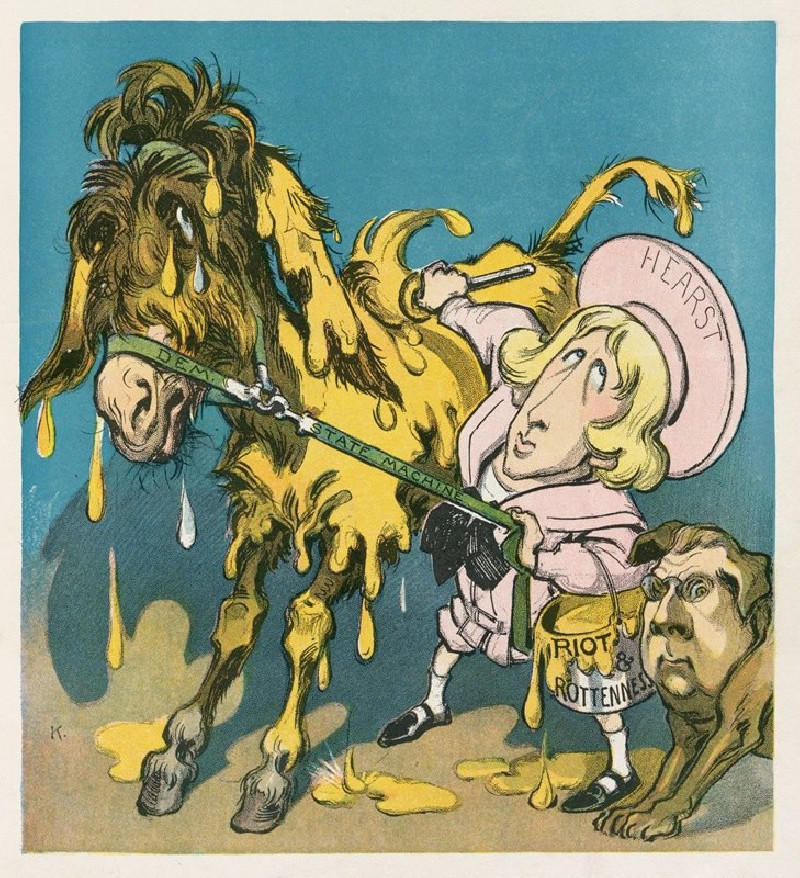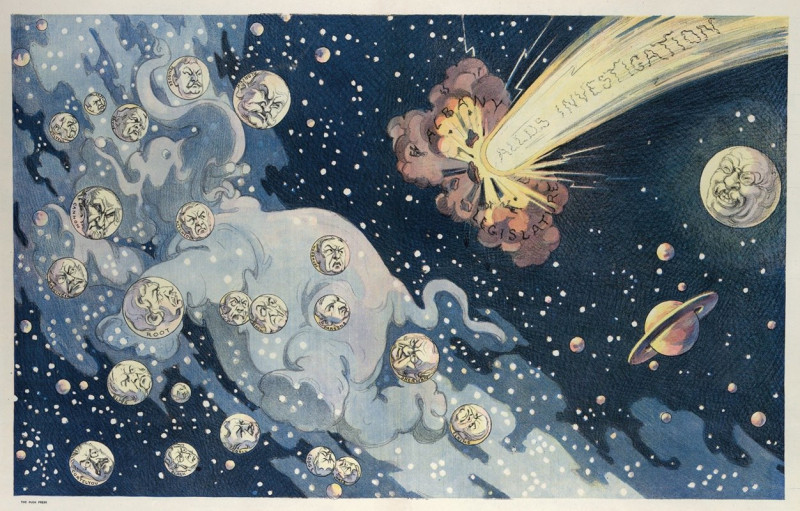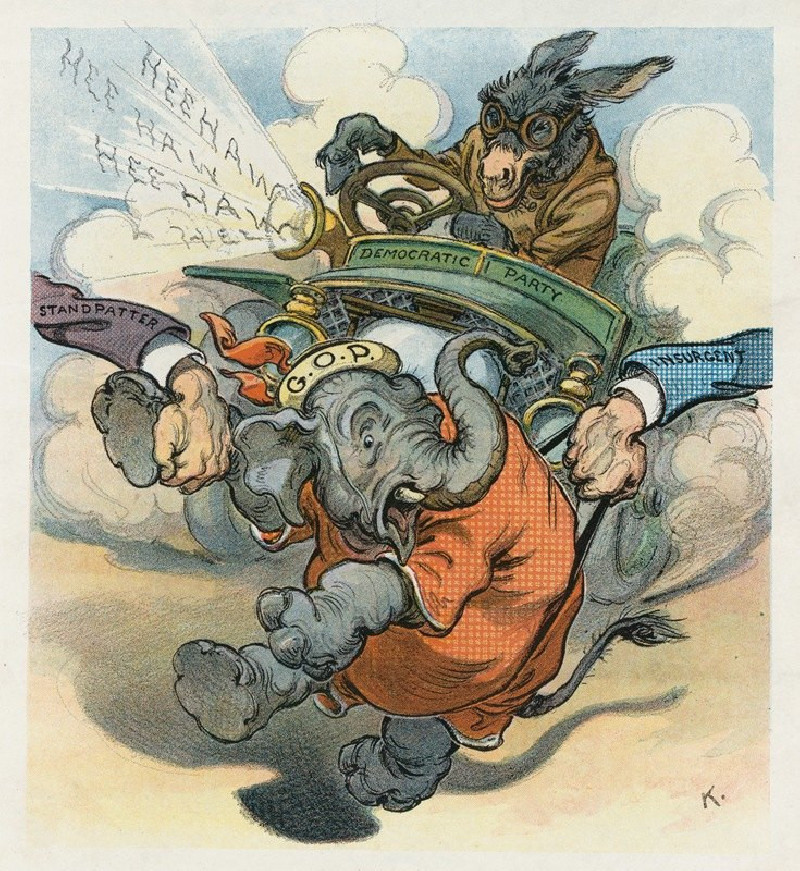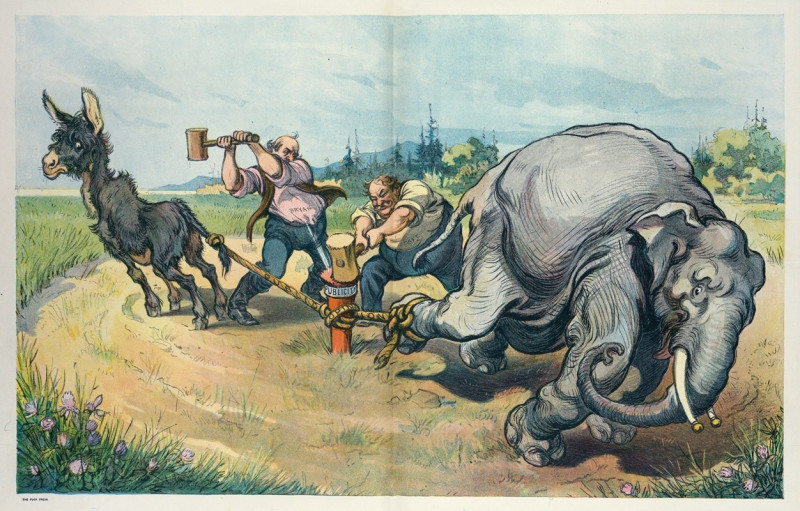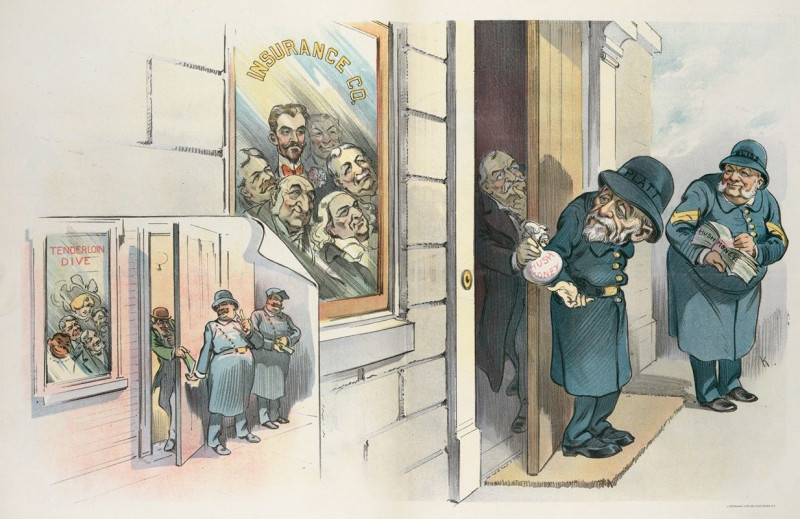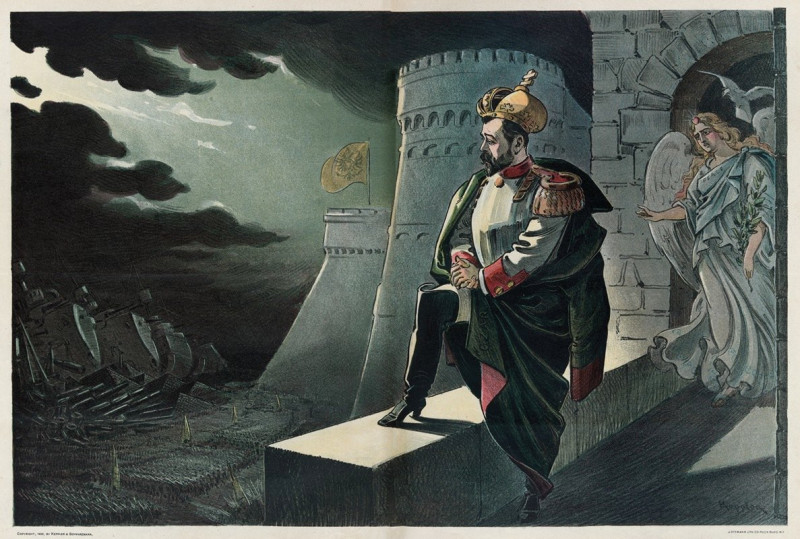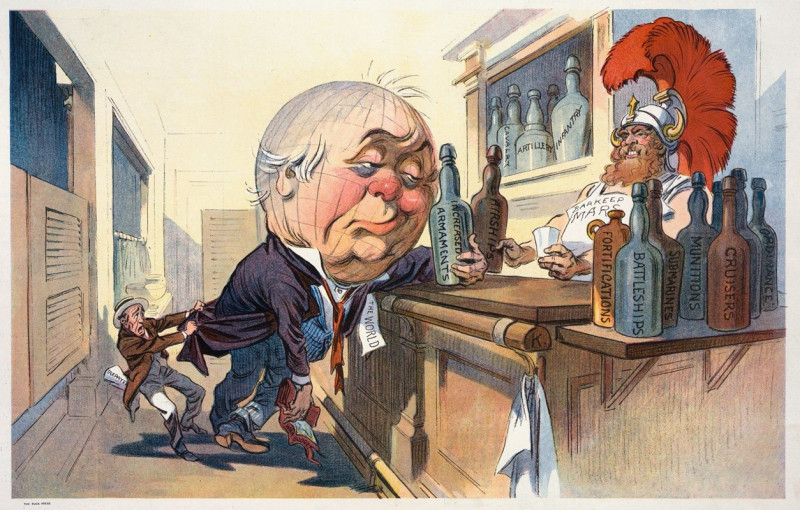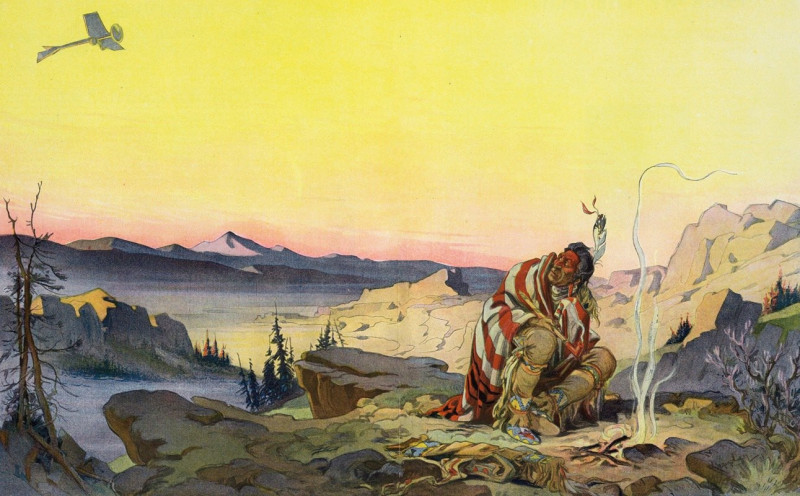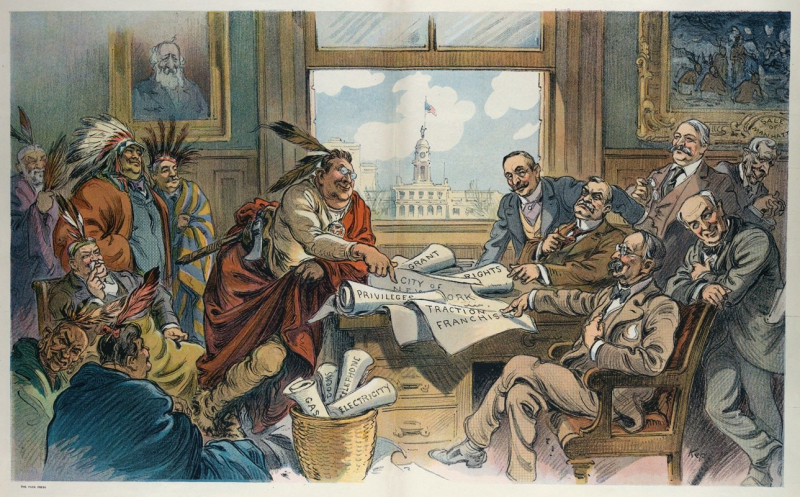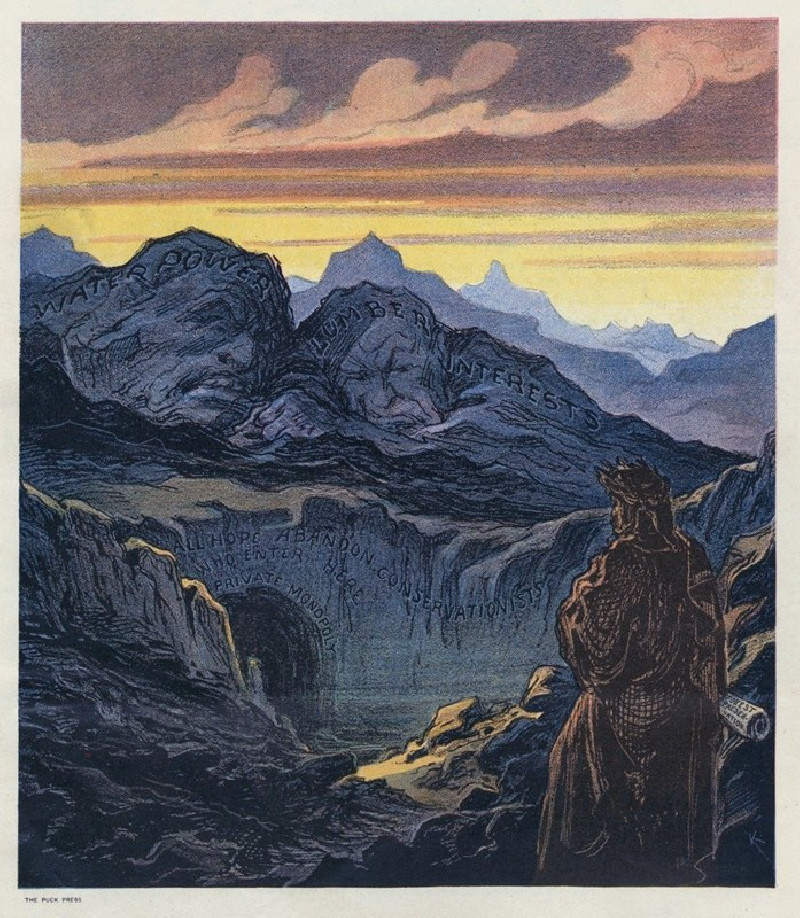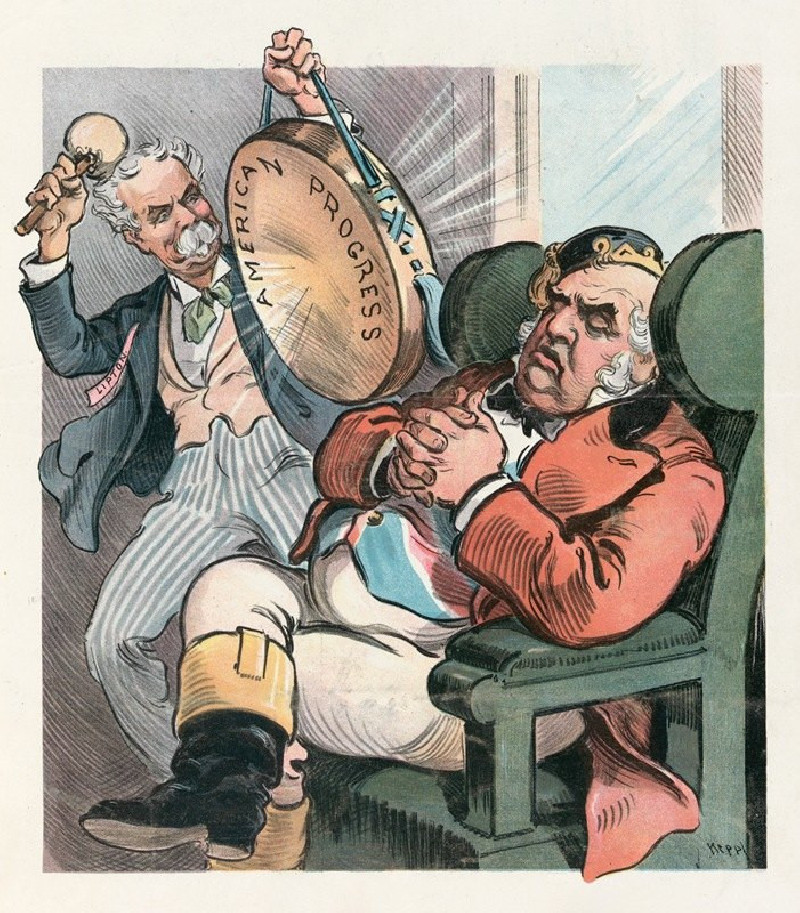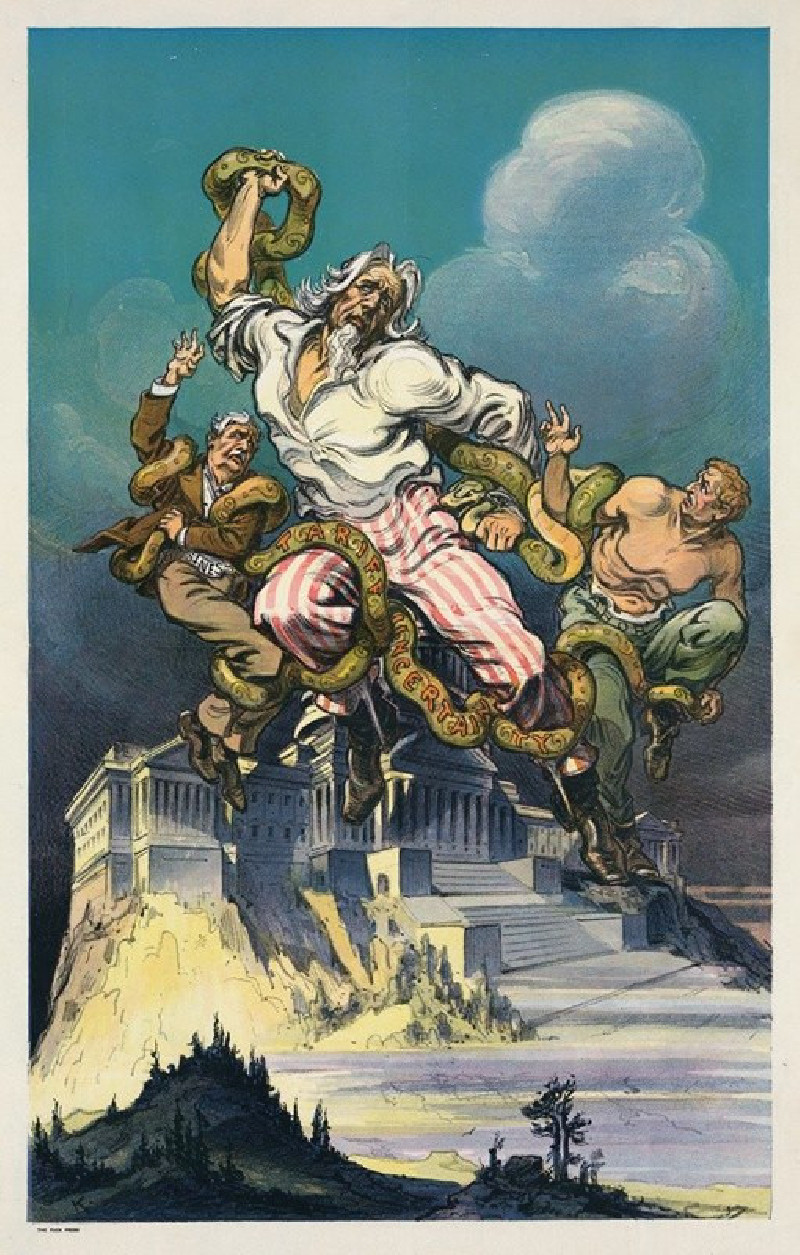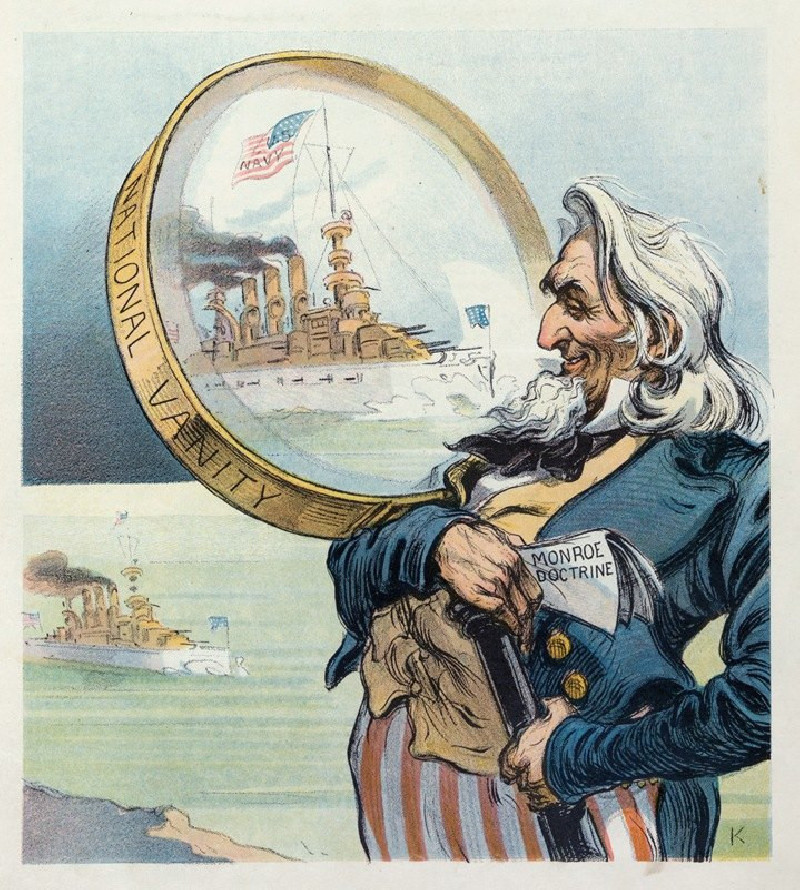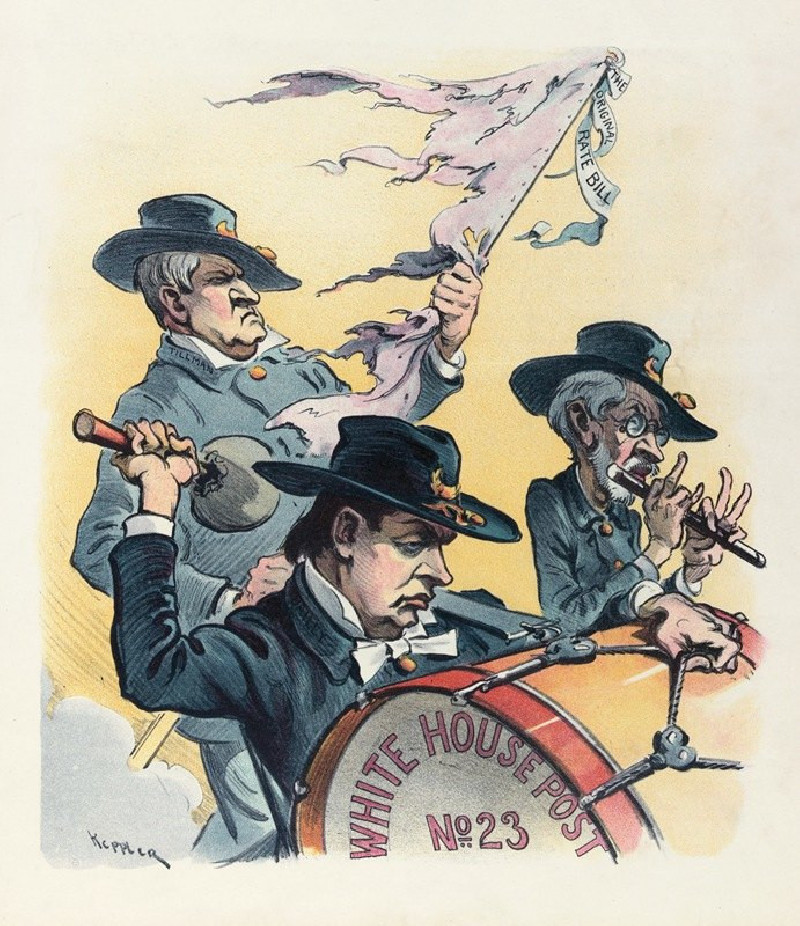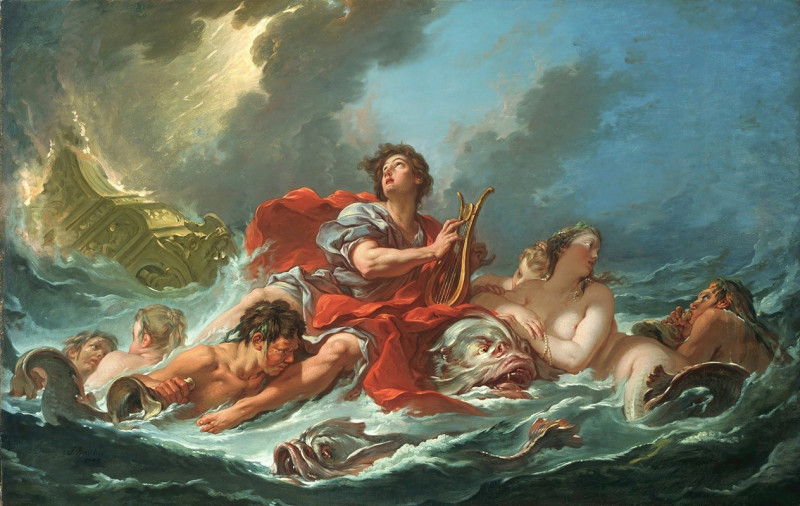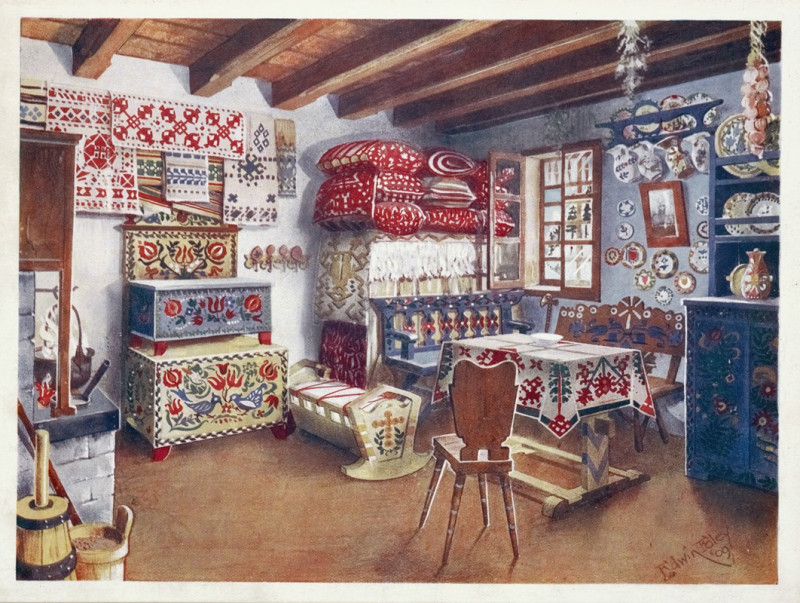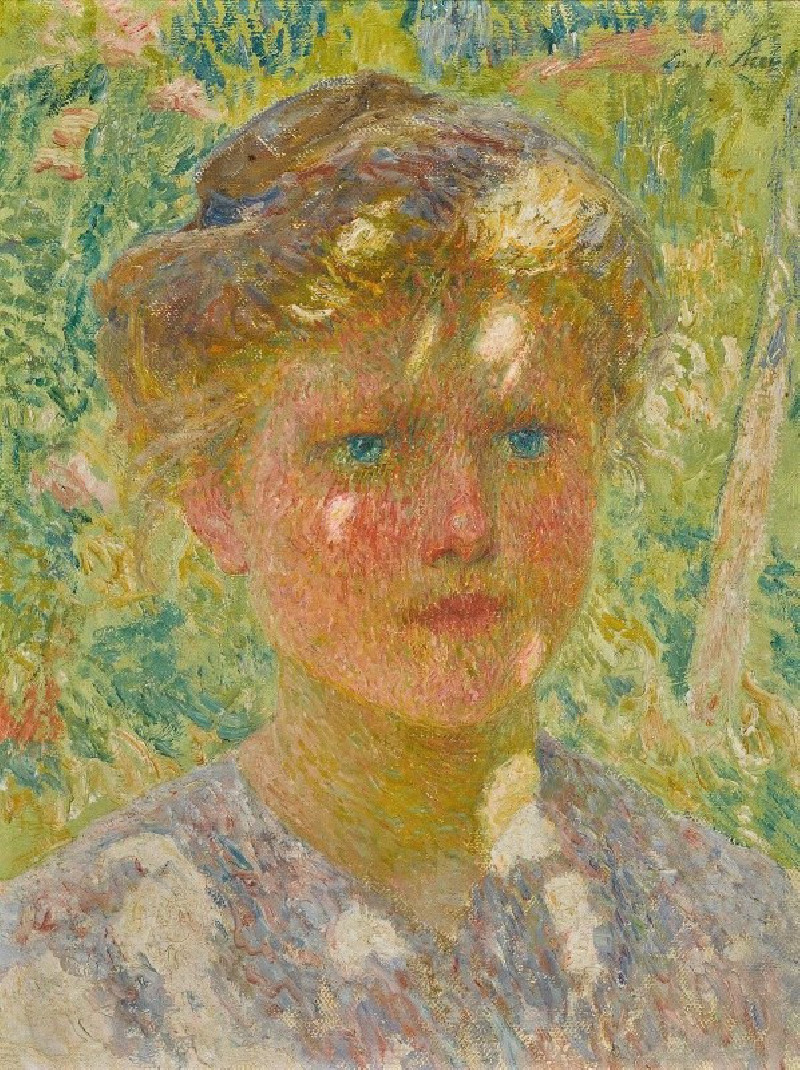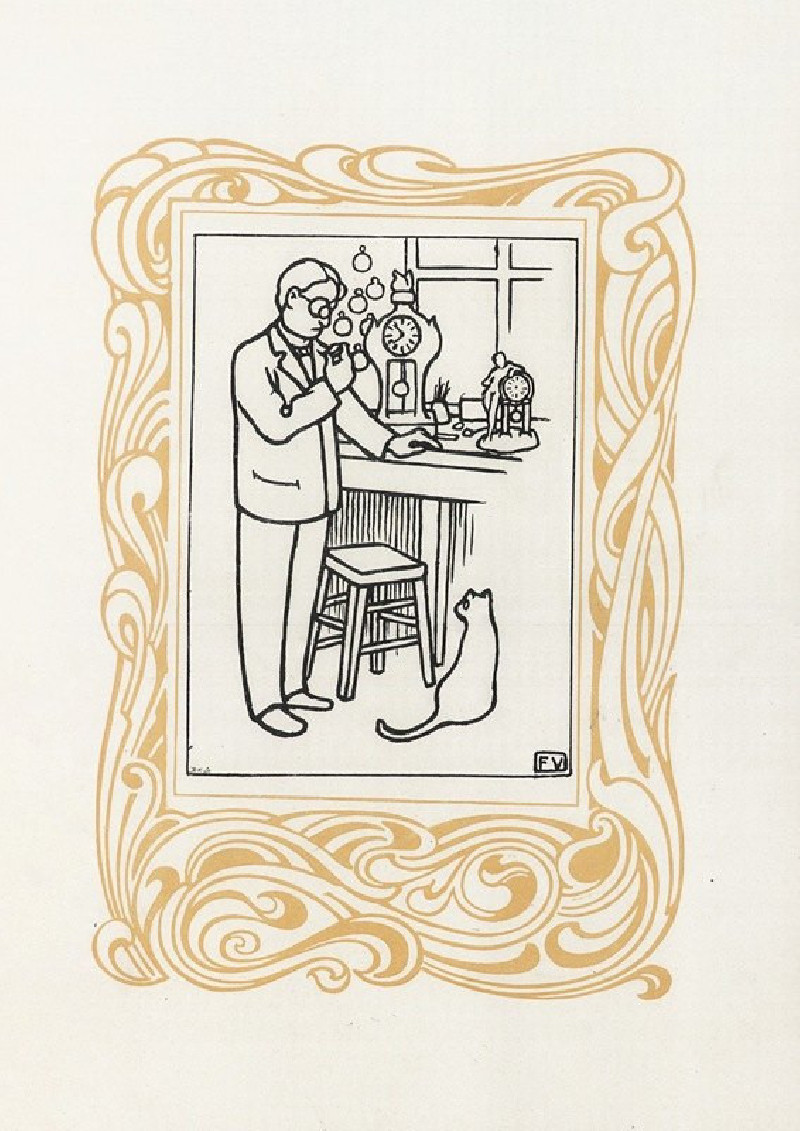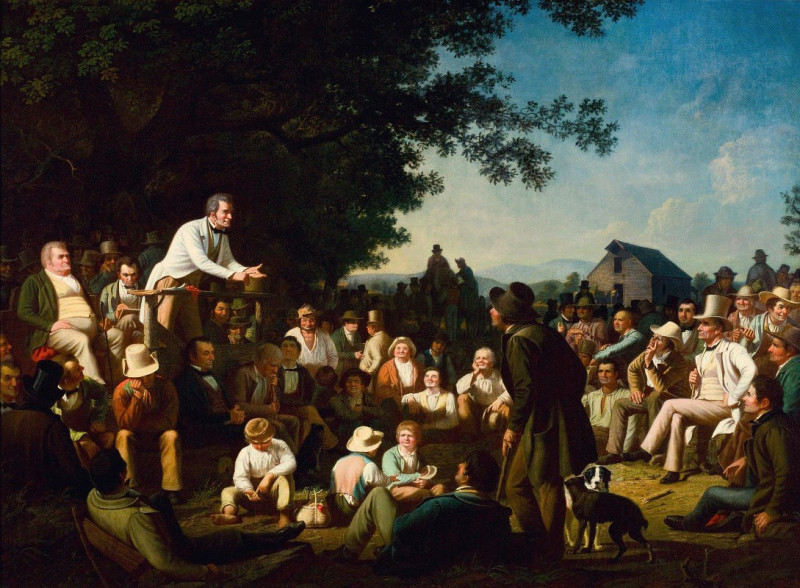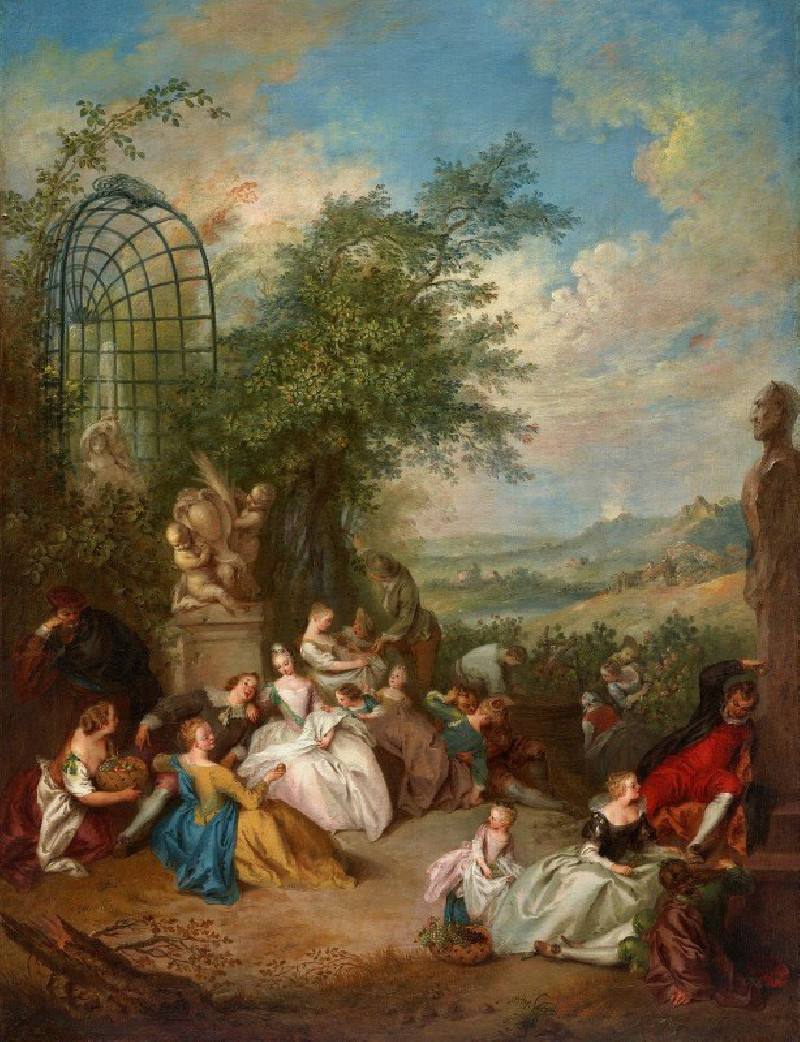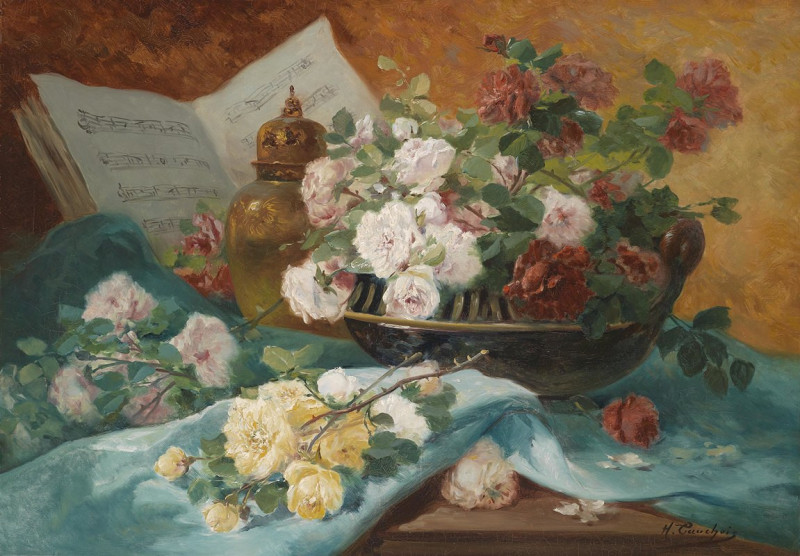It makes a difference where you are (1901)
Technique: Giclée quality print
Recommended by our customers
More about this artwork
Udo Keppler's satirical painting "It makes a difference where you are" (1901) offers a sharp and compelling commentary on political and social themes pertinent to its era. This illustration palpably divides the space to contrast the perceptions held by different groups.In the painting, a large figure is seated on a chair embellished with eagle motifs, symbolizing power and authority. This seated figure, stoic and somewhat detached, is surrounded by whimsical and chaotic scenes depicted within frames on either side of him. These framed scenes are bustling with activity and illustrate contrasting versions of his governance or rule. On the left, a frame holds a character richly dressed as a colonial official who portrays an air of nobility and control, brushing off a message labeled "Cincinnati’s Message," disregarding direct communications or grievances. This could signify the politician’s dismissal of certain public opinions or local issues.On the right, however, the imagery takes a darker turn with scenes of violence and distress, showcasing a pirate-like figure chasing diminutive, caricatured figures of other ethnicities, implying a critique of imperialistic or aggressive foreign policies under his administration. This scene might be referencing the exploitation or detrimental impact of such policies on foreign lands and peoples.Astonished figures peer from behind a curtain at these depictions, symbolizing perhaps the general public or other politicians, their expressions mirroring horror or disbelief, which contrasts sharply with the complacency of the central figure.Keppler’s work is both a striking visual narrative and a critical reflection on the impact of leadership and the differing perspectives on governance depending on one's position or where one stands—literally and metaphorically.
Delivery
Returns
Udo J. Keppler, since 1894. known as Joseph Keppler, Jr., was an American political cartoonist, publisher, and Native American advocate. The son of cartoonist Joseph Keppler (1838–1894), who founded Puck magazine, the younger Keppler also contributed to cartoons, and after his father's death became co-owner of the magazine under the name Joseph Keppler. He was also a collector of Native American artifacts.

